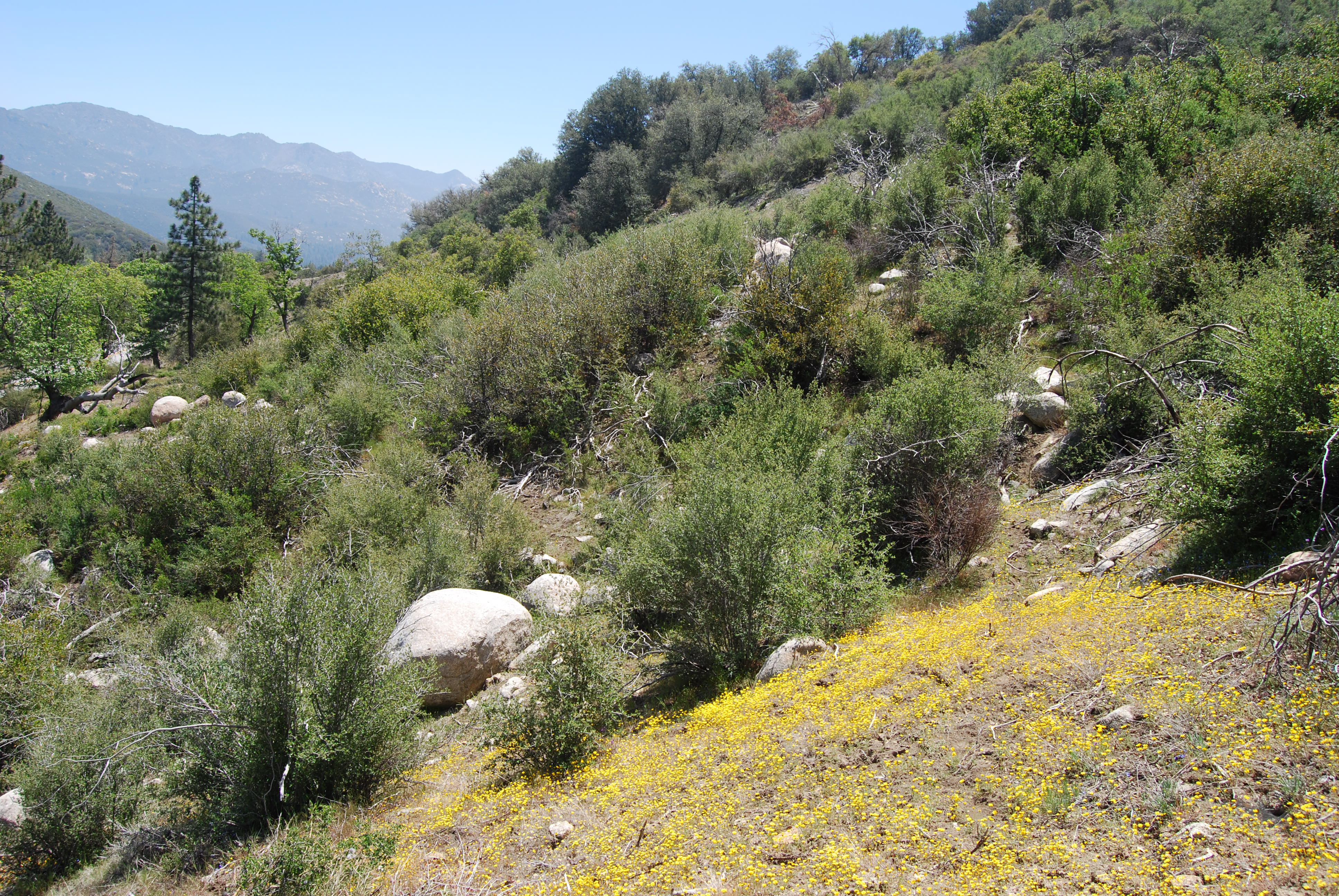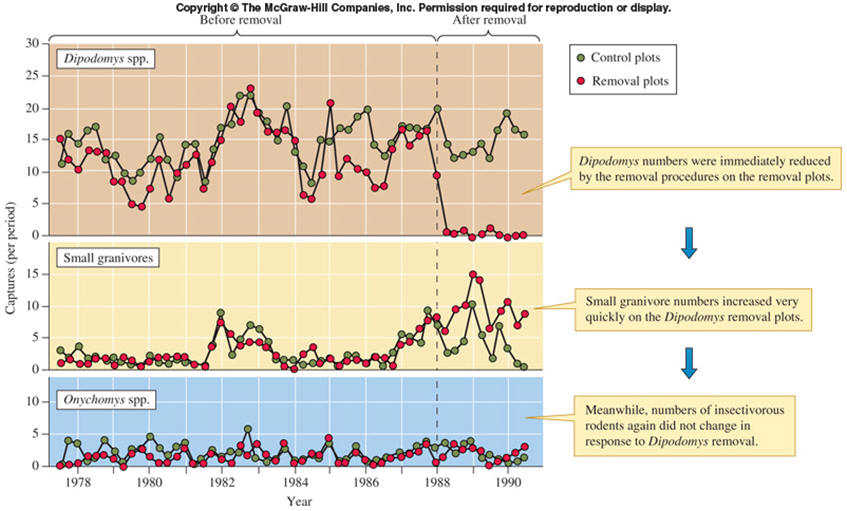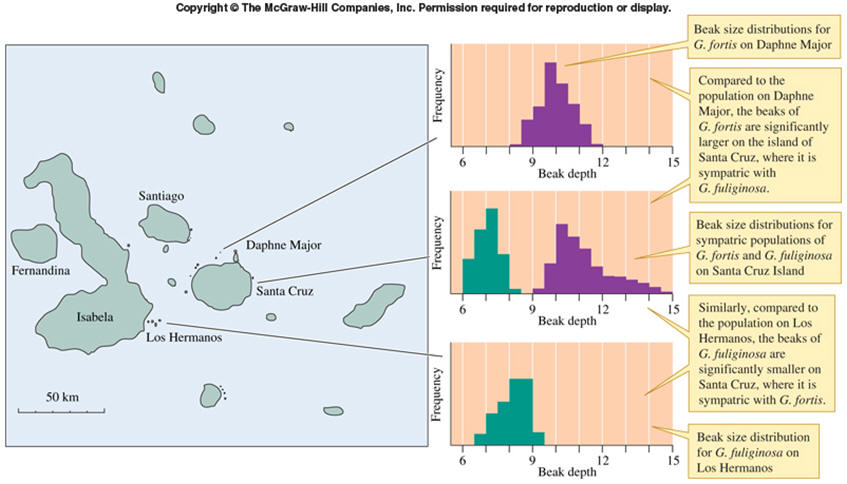The INTERACTIONS UNIT
Chapter 13 -- Competition
Inter- and Intraspecific
competition; Resource and interference competition

Copyright James K. Adams, 2009
Southern Sierra Mountains, west of Palm Springs, California. Although this may not look like competition, there is significant
competition between plants going on for nutrients in the soil, both inter- and intraspecific resource competition.
Competition by plants -- for soil nitrogen

This graph shows that increased soil nitrogen increases growth in S. nutans, IF densities of the plant are low.
If density of the plants is high, nitrogen remains a limiting factor for growth, because the plants are competing
STRONGLY for the nitrogen. One could assume that if enough nitrogen was added, that growth would increase
even at higher densities, assuming that really high levels of nitrogen are not toxic!
Competition for soil nutrients can lead to SELF THINNING

For Medicago sativa plants, if a lot of seedlings get started in a given area, over time, as the plants grow,
many of the plants will die out. This is because some plants either got a head start or are a better competitor
for some other reason, and the others die. This is a process called self-thinning -- as plants get bigger, and
each requires more resources, then the resources can support fewer and fewer larger plants.


As planthopper populations increase on a single plant, with competition making fewer and fewer resources available
for each individual, then survivorship and body size go down, and development time for the planthopper goes up.

Resource partitioning by different (Darwin's) finches on the Galapagos.


In drought years on the Galapagos, the seed abundance goes down. The softer, easier-to-eat seeds are eaten first,
meaning that overall seed hardness (of the seeds that are left and not eaten) goes up. That in turn means that those
finches that can handle harder seed survive better in those years, and indeed the average size of surviving finches
goes up in drought years (or, another way of saying that is that smaller finches die off in drought years).
Competition and Shaping of Niches


In the graph and image above, the dessication resistant barnacle Chthamalus does better in the upper
intertidal than the barnacle Balanus, which is a better competitor in the middle intertidal. In the lower
intertidal, larger predators can feed on both, and we see a reduction of barnacles there.


In southeastern Arizona, a study was done with fenced plots and the large seed-eating Dipodomys, smaller seed-eating
Perognathus, and the insectivorous Onychomys. Where the two seed-eating rodents were together, Dipodomys seem
to keep numbers of the smaller Perognathus very low, but in plots where the Dipodomys were excluded, Perognathus
numbers quickly go up. Onychomys, since they eat insects instead of seeds, were unaffected by large or small numbers
of either seed-eater.
Character Displacement

Where the Galapagos finches Geospiza fortis and fuliginosa live separately on different islands, there is overlap in beak
depth, although fuliginosa has a smaller beak size than fortis. Where they occur together on the same island, beak depth
has been displaced downward in fuliginosa and upward in fortis, so there is less actual competition for seeds. What
caused this? When they first occurred together, there would have been competition for middle sized seeds, and those
in both species eating middle sized seeds would have experienced greater competition and therefore had reduced fitness.
As such these were selected against and we now see the distribution of beak sizes that don't overlap.











